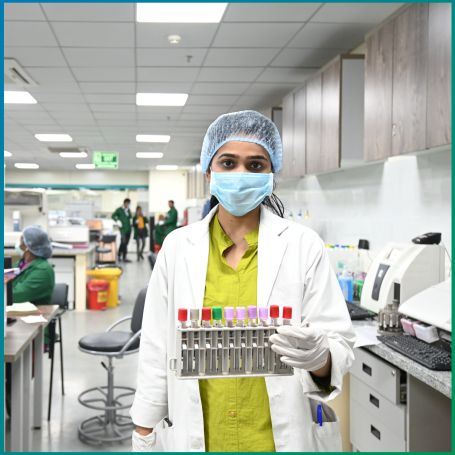
The C/S Catheter Tip Test involves collecting a sample from the tip of a catheter to test for the presence of microorganisms (bacteria or fungi) that may have caused an infection.

The C/S Catheter Tip Test is a diagnostic procedure used to detect infections associated with catheter-related bloodstream infections (CRBSI). A catheter is a medical device inserted into the body to deliver fluids, medications, or provide access to blood vessels for medical procedures like dialysis, intravenous (IV) therapy, or blood draws. While catheters are widely used in modern healthcare, they can sometimes become a pathway for bacteria or fungi to enter the bloodstream, leading to serious infections.
1] Preparation: The healthcare provider will clean the catheter insertion site to minimize the risk of external contamination during the procedure. The patient may also be asked to stop any medications that could affect the test results, such as antibiotics, prior to the sample collection.
2] Catheter Removal or Sampling: The test can be performed in two ways:
A] Sampling Without Removing the Catheter: A sterile needle or syringe is used to aspirate a small amount of fluid from the catheter. The sample is then sent for culture and sensitivity testing.
B] Catheter Removal: In cases where the catheter is no longer needed or is suspected to be infected, the catheter tip may be removed, and the tip is sent to the lab for analysis. In either case, the sample is taken under sterile conditions to avoid contamination.
3] Laboratory Analysis: The collected catheter tip sample is sent to the laboratory, where it is cultured to grow any microorganisms present. The lab will identify the type of pathogen (bacteria or fungi) and perform sensitivity testing to determine which medications are most effective in treating the infection.
4] Sensitivity Testing: The sensitivity testing phase involves exposing the identified pathogens to different antibiotics or antifungals to determine which ones can effectively inhibit or kill the microorganism. This helps the doctor select the most appropriate treatment.
1] Positive Culture: If a pathogen is identified, the lab will determine whether it is a bacteria, fungus, or yeast. Sensitivity testing will follow to identify the most effective antibiotics or antifungals for treatment.
2] Negative Culture: A negative result means no pathogens were found in the catheter sample. However, this does not rule out infection elsewhere in the body, and further testing may be needed if the patient continues to show symptoms.
3] Identification of Resistant Pathogens: In some cases, the test may reveal that the infection is caused by antibiotic-resistant bacteria or fungi. Sensitivity testing helps determine the right course of treatment for these resistant organisms.
Choosing best pathology lab test near me for C/S Catheter Tip Test ensures the highest quality of care and diagnostic precision. We prioritize accuracy by using state-of-the-art laboratory equipment and advanced techniques to identify infections quickly and reliably. Our team of skilled professionals is dedicated to providing a seamless experience, from expert sample collection to the timely delivery of results. Whether you're at a clinic or prefer the convenience of home sample collection, Diagnopein ensures comfort and convenience. With a focus on personalized care, we help you understand your test results and guide you towards the most effective treatment. Trust Diagnopein for accurate, affordable, and fast C/S Catheter Tip Test results, empowering you to make informed decisions about your health.
1. Culture Method
2. Sample
3. Colony Count
4. Organism(s) Isolated
5. Culture Report: Culture yields growth of
6. Culture isolated after 7 days :
7. Culture isolated after 14 days:
8. Culture isolated after 21 days:
9. Ampicillin
10. Amikacin
11. Amoxicillin clavulanate
12. cefoperazon+sulbactam
13. Cefuroxime
14. Cefepime
15. Cefotaxime
16. Ciprofloxacin
17. Ertapenem
18. Gentamicin
19. Imipenem
20. Meropenem
21. Norfloxacin
22. Nitrofurantoin
23. Piperacillin-tazobactam
24. Trimethoprim-Sulfamethoxazole (Cotrimoxazole)
A sample is collected from the tip of a catheter either through aspiration (needle or syringe) or by removing the catheter and sending it to the lab for analysis.
It helps diagnose catheter-related bloodstream infections (CRBSI), which can lead to severe complications like sepsis. It also helps identify the pathogen causing the infection and determines which antibiotics or antifungals will be most effective.
Preparation generally involves following any specific instructions from your healthcare provider, such as stopping certain medications. There are no special fasting or diet restrictions required.
The test can help diagnose bloodstream infections, sepsis, endocarditis, thrombosis, and infections caused by drug-resistant organisms.